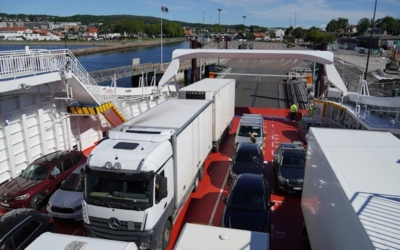Fleet EV Transition Plan for Directors
Introduction
Transitioning to electric vehicles is no longer a question of if but how. As a fleet manager, your Fleet EV Transition Plan needs to balance operational performance, cost control and rollout speed — all while keeping drivers and maintenance teams confident. This guide walks you through pragmatic steps: assessment, costs, charging, operations and the metrics that prove success. Read on to build a clear, actionable plan you can present to stakeholders today.
Executive Summary & Strategic Goals
Your opening section should succinctly state why the fleet is electrifying and what success looks like. Define a 12–36 month horizon and set measurable objectives: for example, a 30% reduction in tailpipe emissions, a two-year payback on pilot assets, or converting 25% of light-duty vehicles in the first phase. These targets form the backbone of your Fleet EV Transition Plan and help prioritise investments.
Transition objectives and timeline
Detail phased milestones: pilot (3–6 months), evaluation (6–12 months), scale (12–36 months). Be pragmatic — start with low-complexity routes and vehicles to build confidence and refine KPIs before tackling long-haul or specialised assets.
Stakeholders and governance
List owners and sponsors: fleet operations, facilities, finance, procurement and IT. Set a steering group cadence (monthly during pilot, quarterly during scale). Clear governance reduces delays and ensures your Fleet EV Transition Plan stays aligned with corporate objectives.
Fleet Assessment & Vehicle Selection
Start with data. A successful Fleet EV Transition Plan maps vehicle duty cycles against EV capabilities. Use telematics and usage logs to pinpoint which vehicles are ideal early candidates. The aim is to replace the easiest, most cost-effective units first to prove value and minimise operational risk.
Vehicle suitability analysis
Evaluate payload, tare weight, accessory loads (PTOs, refrigeration) and range needs. Not every vehicle should be replaced immediately — prioritise those with predictable daily milage and return-to-base patterns.
Route and duty-cycle profiling
Analyse GPS and telematics data to determine average trip length, idle time and overnight parking locations. If you haven’t yet centralised this data, now is a good time to utilise your Tracking and telematics solutions to capture an evidence-based picture.
Pilot vehicle criteria and sample size
Select a representative sample — typically 5–10% of the vehicle segment — to capture meaningful results without overcommitting capital. Define success thresholds for range reliability, downtime and cost-per-mile to inform scale decisions.
Total Cost of Ownership & Financing
Understanding TCO is critical. Your Fleet EV Transition Plan should compare lifetime costs of ICE vs EV across acquisition, energy, maintenance, incentives and residual values. Transparently modelling these elements helps secure buy-in from finance and procurement.
TCO components and comparison framework
Include purchase price, infrastructure amortisation, energy costs (kWh/mile), maintenance savings, battery degradation, and resale value. Use conservative energy price projections and account for utility demand charges if depot charging is heavy.
Incentives, grants, and tax considerations
Factor in national, regional and local incentives, plus manufacturer rebates. Some incentives require specific reporting or vehicle use restrictions — document these to avoid surprises and to improve your ROI calculation.
Financing and procurement strategies
Consider leasing or fleet-as-a-service models to reduce upfront cash impact. Bulk procurement can secure better pricing and support. Negotiate warranties and battery performance guarantees as part of procurement terms.
Charging Infrastructure & Electrical Planning
Charging is often the make-or-break element. A robust Fleet EV Transition Plan covers depot charging, opportunity charging and coordination with utilities to ensure capacity and cost-efficiency. Planning early prevents long lead times and costly retrospective upgrades.
Depot charging strategy
Decide charger quantity and power levels based on duty cycles: overnight low-power charging for predictable routes, higher-power chargers for fast turnarounds. Implement smart scheduling to flatten demand and reduce peak charges.
Public, opportunity, and DC fast-charging considerations
Use public charging where depot charging is impractical, but note access and cost variability. For mixed-use fleets, a hybrid strategy often works best. For technical guidance, see our in-depth post on charging infrastructure.
Site power upgrades and utility coordination
Early engagement with your local network operator reduces interconnection delays. Assess transformer capacity and potential for on-site storage or solar to mitigate demand charges. Build realistic timelines for civils, permits and electrical works.
Operations, Maintenance & Workforce Readiness
Operational changes are as important as vehicle swaps. Your Fleet EV Transition Plan must address new maintenance workflows, technician training and driver habits to protect battery life and optimise charging windows.
Maintenance model and parts readiness
EVs simplify many maintenance tasks but introduce new systems: battery management, high-voltage safety and software updates. Upskill your technicians and ensure spare parts and diagnostics tools are available.
Training and change management
Drivers will need coaching on smooth driving, range awareness and charging etiquette. Internal communications should set expectations about initial teething issues and highlight support resources.
Policies, safety, and compliance
Update SOPs for charging, vehicle checks and emergency procedures. Ensure compliance with any regional ZEV mandates and reporting obligations. If you manage different fleets like Taxi or Car Rentals, tailor policies accordingly.
Mid-article demo invite: If you want to explore how Traknova can accelerate your Fleet EV Transition Plan with data-driven readiness assessments and telematics integration, Book demo with our team — we’ll walk through a tailored pilot approach and ROI estimates.
Metrics, Monitoring & Scaling Plan
Measure what matters. Your scaling decision should be evidence-based and linked to KPIs defined in the pilot. A strong analytics setup provides the insight to iterate and scale confidently as your Fleet EV Transition Plan moves from pilot to full rollout.
KPIs to track success
Track energy cost per kilometre, vehicle uptime, charge session efficiency, total cost-per-mile, utilisation and emissions reductions. Regularly compare actuals to your TCO model to identify variance and corrective actions.
Data collection and analytics infrastructure
Centralise telematics, charge-session logs and maintenance records. Consider dashboards that pull live data so operations and finance teams can see performance in near real-time. For related insights on telematics ROI, see Prove Telematics ROI.
Phased rollout, review cadence, and continuous improvement
Define go/no-go thresholds for scaling phases. Hold monthly reviews during pilot and quarterly reviews during scale to refine routes, charging schedules and procurement plans. Continuous feedback loops are the quickest way to improve outcomes.
Conclusion & Next Steps
Building a successful Fleet EV Transition Plan is a cross-functional effort that depends on data, realistic piloting and close coordination with utilities and suppliers. Start small, measure rigorously and scale where you see clear benefits. The right plan protects operations while moving your fleet towards lower emissions and potentially lower lifetime costs.
Ready to take the next step? Book a consultation or book a demo with Traknova to receive a tailored readiness assessment and a phased roadmap for your fleet.
Frequently Asked Questions
How long does a typical Fleet EV Transition Plan take to deliver ROI?
It varies by segment and incentives, but many fleets see meaningful payback within 2–4 years on pilot vehicles when energy and maintenance savings are realised and grants are applied.
What size pilot should I run?
A representative 5–10% of each vehicle segment is a practical starting point — enough to gather reliable data without committing the entire fleet.
How do I manage depot power constraints?
Use smart load management, staggered charging and investigate on-site storage or solar to reduce demand charges. Early utility engagement is critical to avoid long delays.
Can existing telematics integrate with EV charge data?
Yes — many telematics platforms can ingest charge-session logs and battery data for unified analytics. Centralised visibility improves decision-making and performance monitoring.
We’d Love Your Feedback & Please Share
Was this Fleet EV Transition Plan guide useful? Tell us what else you’d like to see — more on financing, charger supplier selection, or maintenance upskilling? Share this article on LinkedIn or Twitter to help other fleet managers. What is the biggest barrier you face today in electrifying your fleet?
Contact Traknova to discuss your unique requirements: Contact us or Book demo for a consultation and a tailored Fleet EV Transition Plan for your operations. For questions about vehicle tracking and security, explore our Tracking and Security offerings.










